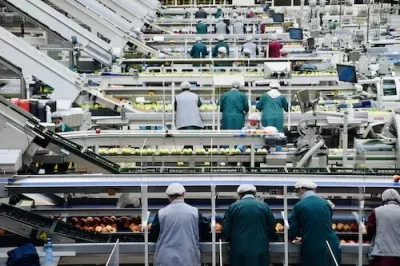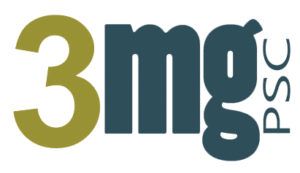There is a rising need for the ability to quickly adapt to shifts in the manufacturing landscape due to factors including workforce shortages, natural disasters, and interruptions in global trade. Automating previously manual processes, such as carrying parts and working in dangerous places, has become increasingly common as businesses seek to improve productivity and employee safety. Modularization of production lines is a trend that more and more businesses are pursuing.
The foundation of modular automation is the development of automated equipment and production lines that do not require a physical architecture to function. For these reasons and more, many manufacturers have begun teaming up with pioneers in global modularization, such as Robotunits, and implementing modular automation solutions for their production machinery.
What is Modular Automation?
The term “modular” describes a system in which individual components can be swapped out for new ones in a new configuration. It helps describe both factories and finished goods. When something is automated, it operates with little to no human oversight.
The next step in factory automation is “modular automation,” The same manufacturing line is broken down into transportable modules that can be swiftly reconfigured to fit varied purposes.
Five benefits of modular automation for manufacturers
Automation is vital to the success of businesses because it raises productivity, shortens the time it takes to deliver services, cuts down on wasteful downtime, and eliminates human error. The consensus is that it improves factories’ security, adaptability, productivity, reliability, and financial returns.
The following part lists five benefits of using modular automation systems in manufacturing plants.
1. Adaptation to changing demand conditions in real-time
Modularization is shifting the order of individual steps in a manufacturing process. The same production line in a factory can be split up into transportable, independently functioning modules using this method. The operator can reprogram each mobile module to perform a new function. Every component is fully compatible and easily integrated with the others. This allows the factory to respond instantly to changes in demand by redirecting output to satisfy various objectives along the same lines.
By repurposing the same production line for different scenarios, a corporation can save time, money, and resources while increasing output. This is all because of the line’s high degree of flexibility and scalability due to the manufacturers’ increased operational flexibility and efficiency, less downtime, quicker time-to-market, and lower costs.
2. Better operational scalability
Regarding satisfying client needs and expanding their company, manufacturers of all stripes constantly look for better automation solutions. However, most businesses lack the resources necessary to automate typical workflows because of unforeseen costs, such as those associated with updating outdated systems, kinematics, and equipment. Modular automation is a cost-effective investment that can secure several benefits for a firm.
The finest example is improved scalability. Since modularization permits line reconfiguration, you can scale up production by using dynamic modules to construct a scalable system. As your business grows, you can easily adjust to your customers’ needs and ramp up production to satisfy the demands of your niche market.
3. Minimized maintenance needs
The lack of available workers is the primary reason behind production delays. Without enough workers, a business can’t keep up with the dynamic nature of manufacturing, which leads to costly delays and lost revenue. The risk of labor shortages may be reduced, efficiency can be improved, and productivity can be increased if manufacturers engage in modular automation, which will help to mitigate these expenses.
The following are just some of how automation can boost productivity.
- The efficiency of the machine is assured
- Reduced cost of operations
- Reductions in the price of managing and maintaining a building over its lifetime
- There will be a decrease in capital expenditures
- Enhanced production adaptability ensures optimal uptime with reduced time-to-market
- Effective manufacturing at a low cost
Due to the significant cost involved, most factories avoid purchasing automation technologies.
4. Low-priced, high-efficiency production
Most manufacturing facilities cannot afford to invest in automation technologies. The high cost of fully automating traditional production processes is a major barrier for most enterprises. Modularization systems are at the core of today’s automated production systems; thus, their management and upkeep necessitate the expertise of trained professionals.
Most manufacturers persist in using inflexible, on-site solutions despite personnel, maintenance, and real estate expenses. The problem with this old technology is that it takes forever to turn a profit. Since modular solutions are cheaper, easier to maintain, and scaled up according to specific production needs, they ensure a higher return on investment (ROI) while increasing productivity and efficiency.
5. Systematization of procedures
Automated modules can be used in contexts other than the assembly line. As a result of integrating with new and different machinery easily, factories can respond quickly to shifting production needs and new product introductions.
Manufacturing today is moving away from centralization and mass production. This, in turn, helps obtain the economies of scale mentality that characterized the first three industrial revolutions and toward one based on mass customization, with the actual production of items placed near demand centers as possible.
Instead of manufacturing and keeping stocks, manufacturers are building fully linked supply chains that dynamically change and react to real-time requirements and upstream supplier and consumer demand. It can make both proactive and reactive adjustments to production in real time.
An added bonus is saving time, energy, and money on training new employees between procedure changes. Therefore, production facilities may maximize uptime, change products quickly, improve plant efficiency, and boost output while spending as little as possible upfront.
Final thought
Many issues that arise in large-scale automation systems can be avoided with modular automation. These activities form the backbone of any manufacturing process. Thus factories often run around the clock to keep things running smoothly and satisfy fluctuating customer demands. However, many manufacturers cannot afford the high cost of automating their legacy production systems. Modular automation allows manufacturers to modify their production lines to meet their unique demands by integrating new modules into existing systems without replacing them entirely.



























